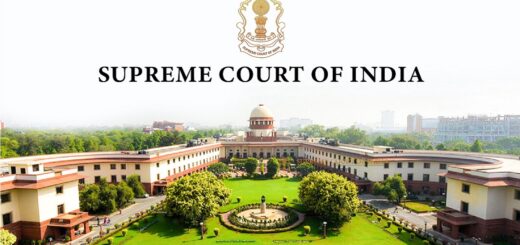Capital grant subsidies are meant for gap funding and are not payments for contractor work; therefore, they will not be subject to TDS deduction, according to the Delhi High Court.

The Delhi High Court ruled that the Capital Grant Subsidy, meant for gap funding, should not be seen as payment for the work done by the Contractor, and therefore, it does not require TDS (Tax Deducted at Source) deduction. This decision came from appeals made by the Commissioner of Income Tax (CIT) against the National Highways Authority of India (NHAI), disputing a previous ruling by the Income Tax Appellate Tribunal (ITAT). A Division Bench, including Justice Yashwant Varma and Justice Ravinder Dudeja, noted that Section 194C(2) states that any amount credited to a contractor’s account, regardless of its name, is considered income for the payee. However, they pointed out that the capital grant subsidy was not an amount to be recorded in the contractor’s accounts as typically understood. Instead, these funds were directly credited to the Escrow Account, meaning Section 194C(2) does not apply here. The Bench clarified that while providing equity capital is a form of financial support and a contractual duty, it should not be interpreted as payment for work performed.
The ITAT ruled that the capital grant subsidy provided by NHAI to its Concessionaires is not subject to withholding tax under Section 194C of the Income Tax Act, 1961. NHAI is responsible for developing, maintaining, and operating National Highways and related facilities. It operates through various Project Implementation Units (PIUs) located throughout the country, which manage and oversee NHAI projects. These PIUs receive funds from the relevant Ministry in the Union Government, which are sent through NHAI’s Head Office.
The capital grant subsidy was given to a Concessionaire who was awarded a project on a Build-Own-Operate-Transfer basis. In 2012, the Assessing Officer (AO) determined that NHAI did not meet its obligation to withhold taxes under Section 194C for the capital grant subsidy given to its Concessionaires. NHAI appealed this decision to the CIT (Appeals), which upheld the AO’s ruling. NHAI then took the matter to the Tribunal, which ruled in its favor. The CIT subsequently appealed to the High Court. The High Court noted that “work” is understood as the effort and results of labor. It concluded that the capital grant subsidy was not related to the physical aspects of the contract. The Tribunal correctly identified it as more of a grant in aid, providing financial support and equity to the Concessionaire for economic viability.
The Court stated that the Concession Agreement clearly indicated that the grant would be cash support given directly and equal to the amount in the bid. This grant was meant to be provided as equity support. The equity support was to be considered alongside the loans and credit facilities from the lenders of the Concessionaire under the financing agreements. These grants and payments were to go straight into the Escrow Account and were not payments for work done, nor were they funds that the Concessionaire could use at will. This is clear when looking at the priorities for withdrawing from the Escrow Account during the Concession period. The provisions explicitly outlined how all funds in the Escrow Account were to be used.
The Court also noted that while equity support was part of the Concession Agreement, it was incorrect to see it as payment for work assigned to the Concessionaire. It pointed out that the capital grant subsidy was not a payment for work itself but represented NHAI’s obligation to provide financial support for creating a public asset. “In this context, it is clear that the capital grant subsidy was essentially assistance from NHAI to the Concessionaire, rather than a payment typically made to a contractor for physical work completed,” it remarked.
The Court explained that the term ‘work’ in Section 194C should be understood as related to the effort put in, or the completion of a task that leads to a result. It stated, “We believe the Tribunal correctly determined that the subsidy or financial aid provided by NHAI to the Concessionaire, intended as viability gap funding, should not be seen as payment for work done by the contractor.” The Court concluded that while Section 194C is not limited to just works contracts, the Appellant needed to prove that the amount in question, represented by the viability gap funding, was payment for actual work or labor performed. Without this proof, those payments could not be subject to withholding tax under Section 194C. As a result, the High Court dismissed the Appeals.
Cause Title: Commissioner of Income Tax (TDS) – 2 v. National Highways Authority of India (Neutral Citation: 2024:DHC:8716-DB)
Appearance:
Appellant: Advocates Sanjay Kumar and Easha.
Respondent: Standing Counsel Santosh Kumar, Advocates Adithya Ramani, and Devansh Malhotra.








